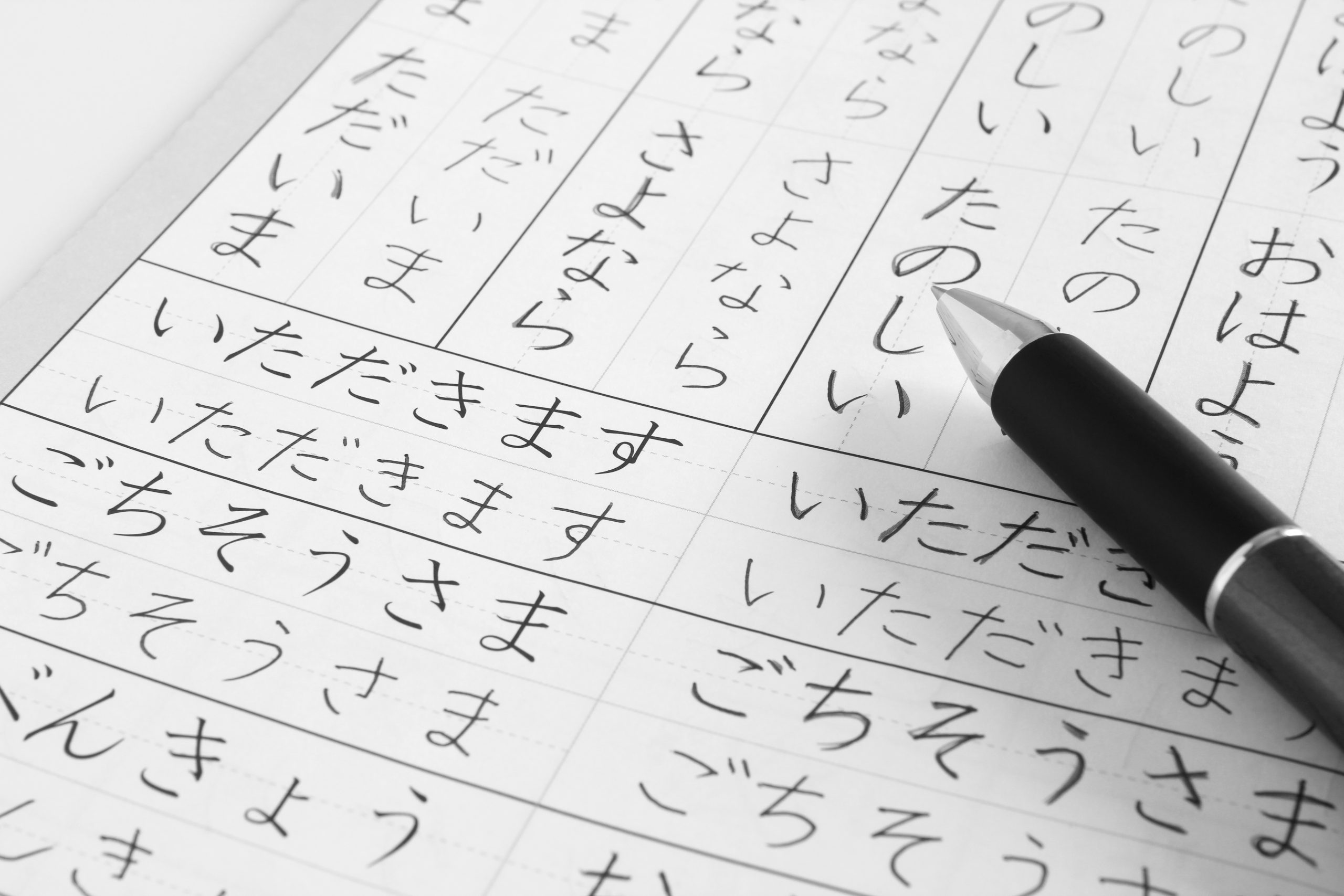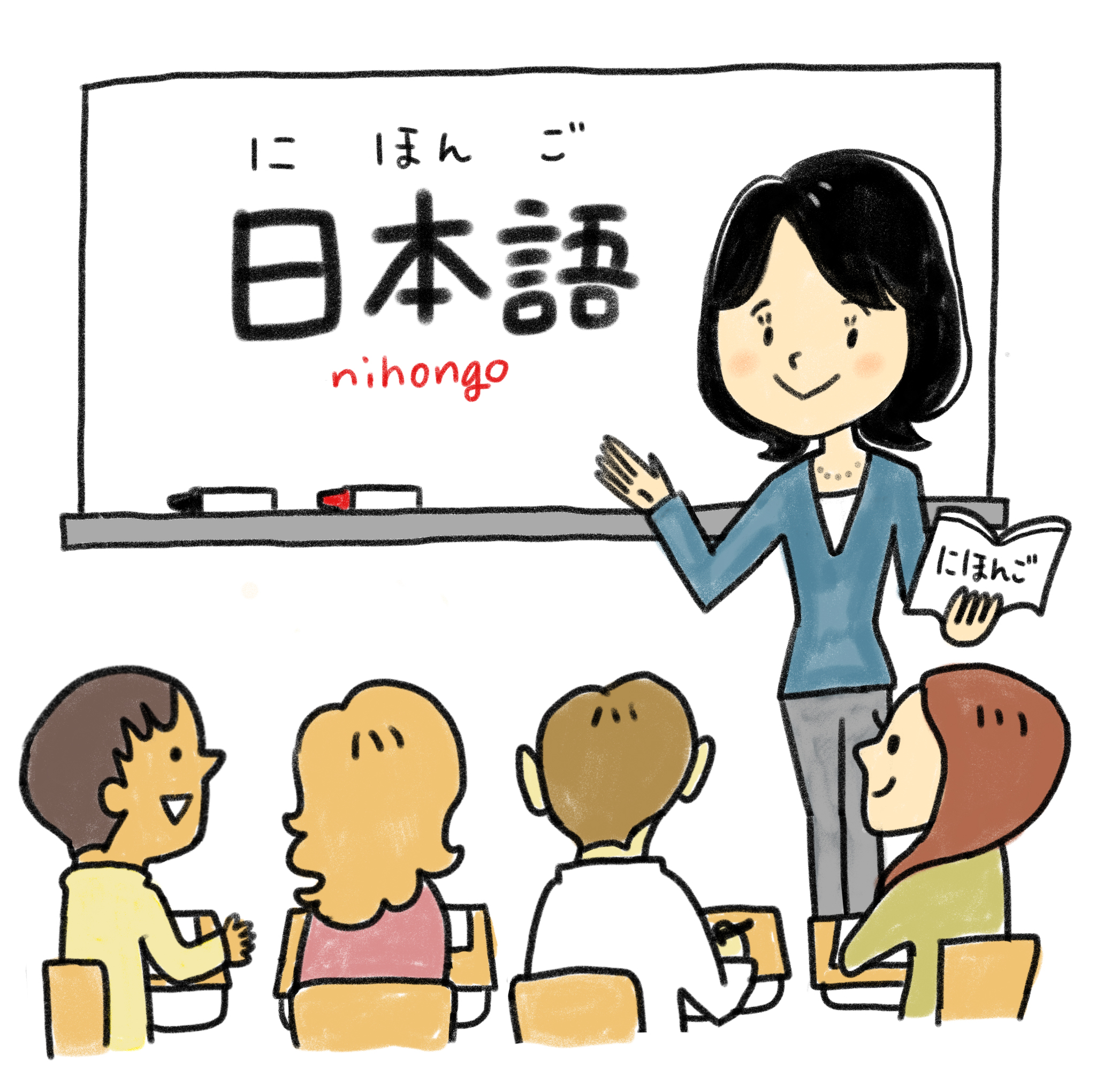
So, you want to learn Japanese. It might seem like a daunting task. After all, Japanese has three alphabets, multiple levels of formality, and a different sentence structure than the one you might be used to. Where to begin? In this article, we’ll talk about the best way to learn Japanese.
Here’s a hint: the best way to learn Japanese is to use it whenever you can!
Start Listening!
The easiest and earliest way to learn Japanese is to listen to it! My Japanese journey began with commutes to my local college; I had some Pimsleur method CDs that I would listen to and repeat back as directed. When I finished these, I would listen to simple broadcasts created by Japan’s national news agency. Thanks to these early steps, I’ve developed a natural level of pronunciation. This can easily be your story, too.
Listening is great because you can do it almost anywhere; there’s no need to set study time aside for listening. It’s the best way into your “zone” for learning Japanese, and often, it’s free! Just Google a genre or topic that interests you and add in Japanese. You can also check out podcasts about learning Japanese. When you manage to catch a word or a phrase, try repeating it back. You’ll learn more Japanese than you’d expect just by listening to it!
Use Romaji to Learn Japanese Pronunciation
Romaji is the Romanized representation of Japanese characters, or 字(ji). If you can read this article, you can read romaji. Romaji isn’t an official Japanese alphabet, it’s the quickest approach to Japanese pronunciation.
Let’s say that you’re just starting to learn Japanese and you see this sentence:
私の名前は田中です。
Because you can’t read these characters, you don’t know how to begin understanding the pronunciation of this Japanese phrase. Even if I replaced the kanji, or the more complex Chinese-based characters, with hiragana, it would still be impossible for a beginner:
わたしのなまえはたなかです。
However, in romaji, this sentence becomes approachable:
Watashi no namae wa Tanaka desu. (My name is Tanaka.)
Even without a rudimentary understanding of Japanese phonetics, you’d be able to make a guess at how this sentence sounds. For this reason, romaji is a powerful ally to those who are just starting to learn Japanese.
It’s important to be aware that this system is not a real part of the Japanese language and should therefore be used only in the early stages of learning Japanese. But it’s as good a place as any to start understanding your target language’s phonetic system.
To get the full bang for your buck out of the romaji system, check out some romaji charts.
Learn Japanese Hiragana
Japan’s original written language was based closely on Chinese characters. The hiragana or “syllabic” system was originally created by women, for women. It was considered simpler and “prettier” than the complex, blocky kanji. Modern Japanese uses a mix of kanji and hiragana, but as hiragana is the basic syllabic alphabet it’s vital to learning Japanese.
Unlike kanji, which has over 2,000 commonly used characters, the hiragana alphabet consists of 46 characters. Some of them are similar to each other, so it might be useful to print out some practice sheets and copy the characters a few times. Beyond that, however, learning how to write hiragana isn’t as important as learning to read it. Most Japanese textbooks for beginners contain hiragana, and you’ll want to be able to use those as soon as you can.
As an official Japanese alphabet, hiragana is a great next step to take after you graduate from romaji. It’s got the same syllabic content, so you’ll be able to continue practicing Japanese pronunciation as you go.
If you want a more comprehensive guide to this important writing system, check out Tofugu’s article here.
Install Important Plugins for Learning Japanese
Now that you’ve got a handle on hiragana, it’s time to plug Japanese a little deeper into your office life. Installing a Japanese keyboard on your computer (and on your phone, while you’re at it), will increase your daily access to Japanese. And that’s the best way to learn Japanese!
Once you’re able to type in Japanese, you’ll want a few plugins for decoding those difficult kanji in your search results. The plugin “Rikaikun” gives definitions and readings in hiragana for any word you hover your mouse over. The Japanese side of the internet will now be at your fingertips; go forth and learn!

Learn Japanese Katakana
The katakana alphabet is a set of different characters for the same sounds presented in the hiragana alphabet. While not as prominent in written Japanese as hiragana, the katakana system is necessary for three reasons: they’re necessary for understanding kanji readings, Japanese borrowed words are written in katakana, and some kanji radicals are named after the katakana characters they resemble.
Learning katakana isn’t necessarily starting a new alphabet from scratch; many of the characters in this alphabet look similar to corresponding hiragana characters. Take a breath, remember what you’ve learned so far, and study this next set of 46 characters for your next step of learning Japanese.
Learn Basic Japanese Kanji and Vocabulary with Clozemaster
With the two “easy” alphabets under your belt, you’re ready to tackle Japanese kanji. This is an extensive and ancient writing system that even most Japanese haven’t fully mastered. But don’t fret! The best way to learn Japanese applies to learning kanji as well: practice every day! This is where Clozemaster comes in.
Trying to memorize kanji character-by-character is a Mt. Fuji-sized task that anyone would balk at. The better way to learn this writing system is in context. Learn a few characters each day (the goal I set in my early study days was 5 kanji per day), but learn them in the context of Japanese sentences.
Clozemaster aims to bolster your learning by deleting words from sentences so you can remember them in context. This is the perfect way to learn kanji because it’s the cornerstone of a highly contextual language.
Try these steps to learn Japanese kanji:
- Play Clozemaster and decide which kanji you want to learn for the day. Use the context of Clozemaster’s sentences to further commit the definitions of your kanji to memory.
- Study the readings and radicals of these kanji. Make flashcards, write them down, or do whatever works best for you to really cement the characters into your brain.
- Practice the kanji whenever you have a spare minute! Many Japanese grade school students practice their kanji lessons by tracing the characters onto their palms with their index fingers. Even without a pen or a piece of paper, you can practice what you’ve learned!
Learn Japanese with Textbooks
It’s time to hit the books! Whether you decide to join a local class, hire a tutor, or just continue on by yourself, there will come a point when Japanese textbooks are necessary. Now that you’ve got a solid amount of vocabulary and the ability to read Japanese lettering, you might want to find a good beginner’s textbook.
I personally used the Genki textbooks when I first started book learning. However, everyone has a different preference in this regard; I recommend doing some research on the different available textbooks before investing in one for yourself.
Textbooks are important for learning Japan’s SOV (Subject Object Verb) sentence structure, as well as other grammatical foundations. With a textbook, you’ll be able to test yourself even further based on what you’ve learned thus far. You’ll also be able to set more goals.
Learn Japanese by Speaking Japanese
It’s time to take what you’ve learned and apply it to real conversation! You can speak Japanese with other learners (although I recommend you have at least one teacher or native speaker present if you do), or you can take things a step further: you can look for a Japanese tutor or a language exchange partner.
There are a couple of ways that you can start speaking with Japanese people. Some sites like HiNative allow you to ask questions of native speakers and answer their questions about your own language. Other sites like Hello Talk provide a secure way to socialize with native speakers from other languages. If you want a more serious teacher-student relationship, websites like iTalki exist to help you make that connection. We live in an age of communication, and communication is vital for learning a language!
Use Media to Learn Japanese
While I wouldn’t recommend anime as a starting point for learning Japanese (not all of it is applicable to real-life conversations!), Japanese cartoons and other media are an excellent bolster for your studies. Consuming Japanese media means that you’re listening, and we’ve already discussed how important that is. It will also give you an insight into the culture of this language you’ve decided to learn. You can learn useful lessons from media like Japanese manners, how to say “hello,” and other useful phrases. If you have a Japanese language partner, Japanese media will give you something to talk with them about.
A few great resources for watching Japanese films or shows would be Netflix or Amazon Prime. Try Netflix’s language learning plugin and check out some of the top Japanese flicks on the site.
Set Goals While You Learn Japanese
When you feel comfortable enough to really challenge your knowledge of Japanese, it might be helpful to sign up for a Japanese test. If you want to end up working at a Japanese company, a test might even give you a head start on the credentials you’d need. Even if you don’t have plans to take your career to Japan, signing up for a test is a great way to understand where you are in your studies. It also gives you a solid goal to work towards.
There are two major tests that Japanese learners apply for. The first and more popular is the Japanese Language Proficiency Test (JLPT). This test is separated into five levels, with the fifth level, or N5, being the lowest. The test covers reading, vocabulary, listening, and grammar. Be sure to check when and where these tests are administered in your home countries; while Japan holds the test bi-annually, many countries only open up registration once per year. Check their website for more information!
The other big test that you can use as a milestone is the Kanji Kentei. As the name suggests, this test is specific to kanji. It isn’t aimed at foreign applicants; in fact, many Japanese people are never able to pass the final level of the ten that are available. But if you’re up for a challenge, or just really enjoy studying kanji, this test might be a good milestone for you to aim for.

Resources to Help You Learn Japanese
While the best way to learn Japanese may vary depending on the learner, having a good set of learning tools is essential for everyone! Here are some final resources that have helped me on my personal learning journey.
Chase Colburn’s Kanji Study App
If you have an Android device, this kanji app is a must. The compiled information on radicals, mnemonics, vocabulary, and the history behind each character is textbook level.
To practice the kanji, you can either draw on your screen or take a multiple-choice quiz for each set. The quizzes can be adjusted depending on whether you want to study the readings, the meanings, or just the appearance of the individual kanji characters.
Some of these features are paid, but the price is no greater than what you’d pay for a kanji dictionary (hint: a kanji dictionary doesn’t fit in your pocket). Unfortunately, the iOS version of this app isn’t up to date; I would only recommend Kanji Study for Android users.
Pimsleur Japanese Courses
If you learn best by listening, the Pimsleur courses might be an excellent start for you. The scientifically-backed method behind Pimsleur’s approach is a solid one: learn new words in spaced intervals, and the human brain has a greater “anticipation” of finding the correct word when tested.
Pimsleur is also great because it bolsters the ability to speak your target language naturally, both in terms of rhythm and in terms of pronunciation. It can be pricey depending on how much you want to invest, but as a beginner I got a lot out of the free trial.
iKnow! Vocabulary App
iKnow’s tiered Japanese courses are thorough and well-balanced. iKnow! is like Clozemaster in that it teaches Japanese kanji and vocabulary in context. You learn a set of new words, then practice them in a game-like quiz mode. Unlike Clozemaster, iKnow! yields its best results if you pay for a membership. Still, the short practice sessions available on the free version are great.
A Good Japanese Dictionary
Whether you want to use the legendary denshi jisho (electronic dictionary), invest in a physical book, or just stick with a phone app, owning a Japanese dictionary will help you learn Japanese. I personally have an older electronic dictionary, as well as the Japanese app on my phone.
Benny’s Fluent in 3 Months Website
Polyglots might seem to the rest of us like a new evolution of language learners, but Benny assures his guests that anyone can master multiple languages—in fact, they can do so in 90 days per language!
Whether or not you feel like Benny’s 3-month language course is for you, there are still plenty of awesome resources on his website to explore. If anything, Fluent in 3 Months has an open community and a passionate founder who wants to promise every language leaner this: you can do it!
The Clozemaster App
As mentioned earlier, Clozemaster is an amazing website for learning Japanese. But did you know that there’s also a Clozemaster app? Download it on iOS or on Android and take this fantastic learning tool with you wherever you go!
The Best Way to Learn Japanese – Conclusion
While there might not be one best way to learn Japanese, there are many steps that you can take to start your studies off on a strong note. Try not to avoid the alphabets just because there seem to be so many, take kanji one step at a time, and use awesome programs like Clozemaster to build a strong foundation of contextual vocabular!
Remember that the most important thing to learning Japanese is this: use Japanese every day. Consider it like building up a muscle. If you don’t work out, you lose what muscle mass you had. Keep pumping that language iron, and you’re sure to be speaking with confidence in no time!
Learn Japanese in context with ClozemasterClozemaster has been designed to help you learn the language in context by filling in the gaps in authentic sentences. With features such as Grammar Challenges, Cloze-Listening, and Cloze-Reading, the app will let you emphasize all the competencies necessary to become fluent in Japanese. Take your Japanese to the next level. Click here to start practicing with real Japanese sentences! |

